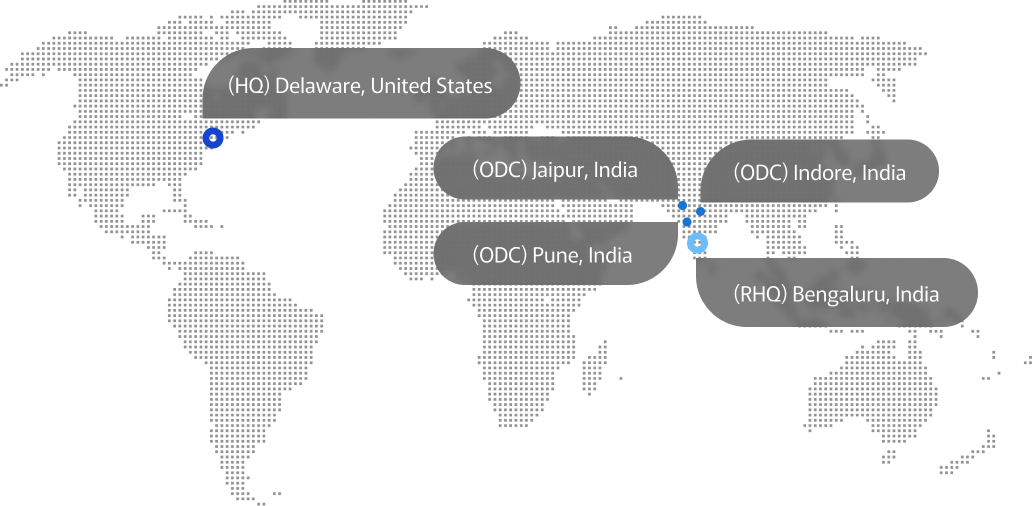
- SAP FLM
Top Challenges Faced in SAP File Lifecycle Management and How to Overcome Them
Effectively handling files is paramount in today’s fast-paced business landscape to maintain control and foster seamless operations. Yet, navigating the lifecycle of these critical files poses numerous intricate challenges. If left unaddressed, these obstacles could disrupt workflows and potentially incur legal repercussions. In this blog, we’ll look into some of the most common hurdles faced in SAP file lifecycle management (SAP FLM) and proffer proven strategies of Advayan to surmount them easily.
Table Of Content
- SAP File Lifecycle Management
- Common Challenges in SAP File Lifecycle Management
- Effective Strategies for Addressing Obstacles in SAP File Lifecycle Management
- In Summary
SAP File Lifecycle Management
SAP file lifecycle management (SAP FLM) refers to the processes and practices involved in managing the entire life cycle of files and documents associated with an organization’s SAP systems. This consists of file creation, storage, usage, and eventual elimination of the file Effective SAP FLM ensures file integrity, compliance with regulatory requirements, and efficient resource utilization.
Common Challenges in SAP File Lifecycle Management
Insufficient Storage Capacity
Organizations often grapple with the mounting volume of files generated by SAP systems, a significant hurdle in SAP File Lifecycle Management. As businesses expand and new files and applications emerge, storage needs can rapidly outstrip available capacity. This can lead to performance degradation and potential file loss. Neglecting this issue can cause system sluggishness, increased downtime, and compromised file accessibility – consequences organizations must proactively address.
Inefficient File Archiving
Organizations must maintain organized archives to keep files secure, accessible, and compliant. However, inefficient archiving processes often lead to excessive file retention, ballooning storage costs, and potential security risks. Such inefficient practices also hinder locating archived files promptly when required, compounding these challenges further. Archiving is crucial for SAP FLM systems, yet many enterprises struggle with streamlining these vital processes.
Lack of Document Version Control
Effective document management is pivotal when working with SAP systems, as files are frequently generated, altered, and disseminated among numerous stakeholders. If version control processes aren’t implemented appropriately, enterprises may encounter difficulties maintaining file accuracy and guaranteeing users access to the latest authorized file versions. This could result in errors, discrepancies, and potential operational issues.
Integration Issues with Other Systems
Seamless integration between SAP File Lifecycle Management systems and external applications like CRM or ERP is crucial, yet challenging. Synchronizing across these platforms requires meticulous planning. Overlooking integration can lead to inconsistencies, inefficiencies, and potential security vulnerabilities. Ensuring smooth communication and asset exchange is paramount for optimal performance and risk mitigation.
Effective Strategies for Addressing Obstacles in SAP File Lifecycle Management
Utilizing Storage Optimization Techniques
When storage capacity becomes limited, companies have options to optimize their systems. File deduplication removes duplicate files, reducing redundancy and freeing up space. Tiered storage is also valuable; frequently accessed files resides on high-performance drives while infrequent files are archived cost-effectively. Strategies like these expand storage capabilities without excessive expense.
Implementing Effective File Archiving Strategies
File archiving is crucial for organizations to meet regulations and avoid legal risks. Clear policies should outline procedures for identifying inactive, yet legally required files. Automated archiving solutions of SAP File Lifecycle Management ensure timely, consistent file transfers. Additionally, customized retention guidelines specify appropriate retention periods for different file types. This reduces storage costs by preventing unnecessary file accumulation. Regularly reviewed archiving strategies optimize file management and mitigate risks.
Ensuring File Security Measures
Safeguarding SAP files’ security and integrity within SAP FLM is crucial. Companies must establish stringent access controls, employ encryption techniques, and implement auditing processes to prevent unauthorized file access or tampering. Conducting regular security evaluations and adhering to industry-recommended protection practices can significantly bolster the overall security measures surrounding SAP file management procedures.
Implementing Document Version Control Processes
Effective document management is crucial for organizations utilizing SAP FLM systems. To mitigate version control challenges, implementing specialized version control solutions tailored for SAP environments is essential. These systems meticulously track file modifications, maintain comprehensive audit trails, and facilitate seamless access to the most recent document versions, fostering efficient collaboration. By adopting robust version control processes, organizations can substantially minimize error risks, enhance collaborative workflows, and uphold file integrity across their SAP ecosystems.
Addressing Integration Challenges with Other Systems
A harmonious interplay between SAP File Lifecycle Management and other business applications is pivotal for smooth file transfers and uninterrupted operations. Companies must leverage potent solutions like Enterprise Service Buses (ESBs) or Application Programming Interfaces (APIs) to enable secure, dependable document exchange. Conducting regular integration assessments and vigilant monitoring can proactively pinpoint and rectify potential obstacles before they disrupt crucial workflows.
In Summary
An effective SAP file lifecycle management strategy is crucial for organizations. It addresses several challenges like limited storage space, inefficient file archiving, poor document version control, and integration issues with other systems. By implementing storage optimization, proper archiving policies, robust security measures, version control processes, and seamless system integration, companies can maximize their SAP investments. Prioritizing SAP FLM sets businesses up for long-term success in today’s data-driven landscape. Collaborating with Elite SAP partners like Advayan can help you with all your SAP File lifecycle management issues and streamline your overall file management systems. Our strategies streamline file management, ensure compliance, and enhance operational efficiency.





